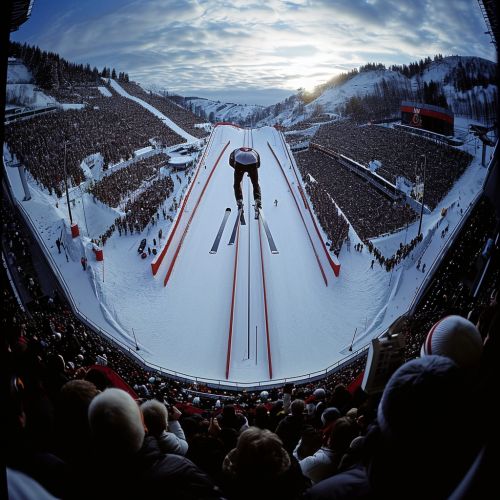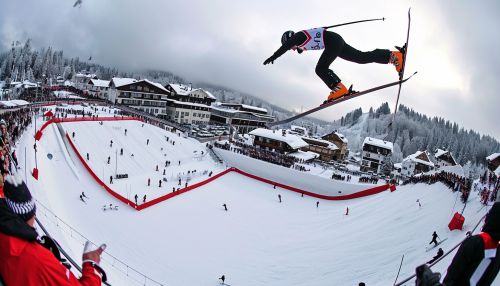Ski jumping
Overview
Ski jumping is a winter sport that originated in Norway in the late 19th century. It involves athletes descending a specially constructed takeoff ramp, jumping, and attempting to land as far down the hill as possible. In addition to distance, judges give points for style. The skis used are long and wide.
History
The first recorded ski jump was made by Olaf Rye in 1808. However, the sport did not gain popularity until the late 19th century in Norway. The first major competition was held in Husebybakken, Norway, in 1879, with the jump length of 20 meters.


Equipment
Ski jumping skis are different from other types of skis. They are wider and longer. The bindings, which hold the boot onto the ski, are designed so that they are only attached at the toe, allowing the skier's heel to move freely. The boots are designed to allow for flexibility of movement.
Technique
The ski jumper begins at the start gate, pushes off, and then goes down the in-run, crouched, to gain speed. At the takeoff, the skier jumps, extending his body and skis to achieve maximum lift. During flight, the skier leans forward, arms at his side, skis in a V-shape. The landing requires the skier to touch down in a telemark position, one ski in front of the other, knees bent.
Competition
In a ski jumping competition, each skier makes two jumps, with scores from both jumps combined to determine the winner. The scoring system is based on distance jumped and style. The hill size and the wind conditions are also taken into account.
Training
Training for ski jumping often begins at a young age. In addition to actual ski jumping, athletes do strength training, flexibility training, and aerobic training. They also study videos of their jumps to improve their technique.
Risks
Ski jumping is a high-risk sport. Injuries are common, especially to the knees and back. Fatalities are rare, but have occurred. Safety measures include helmets, ski suits with built-in airbags, and hills designed to minimize injury.
